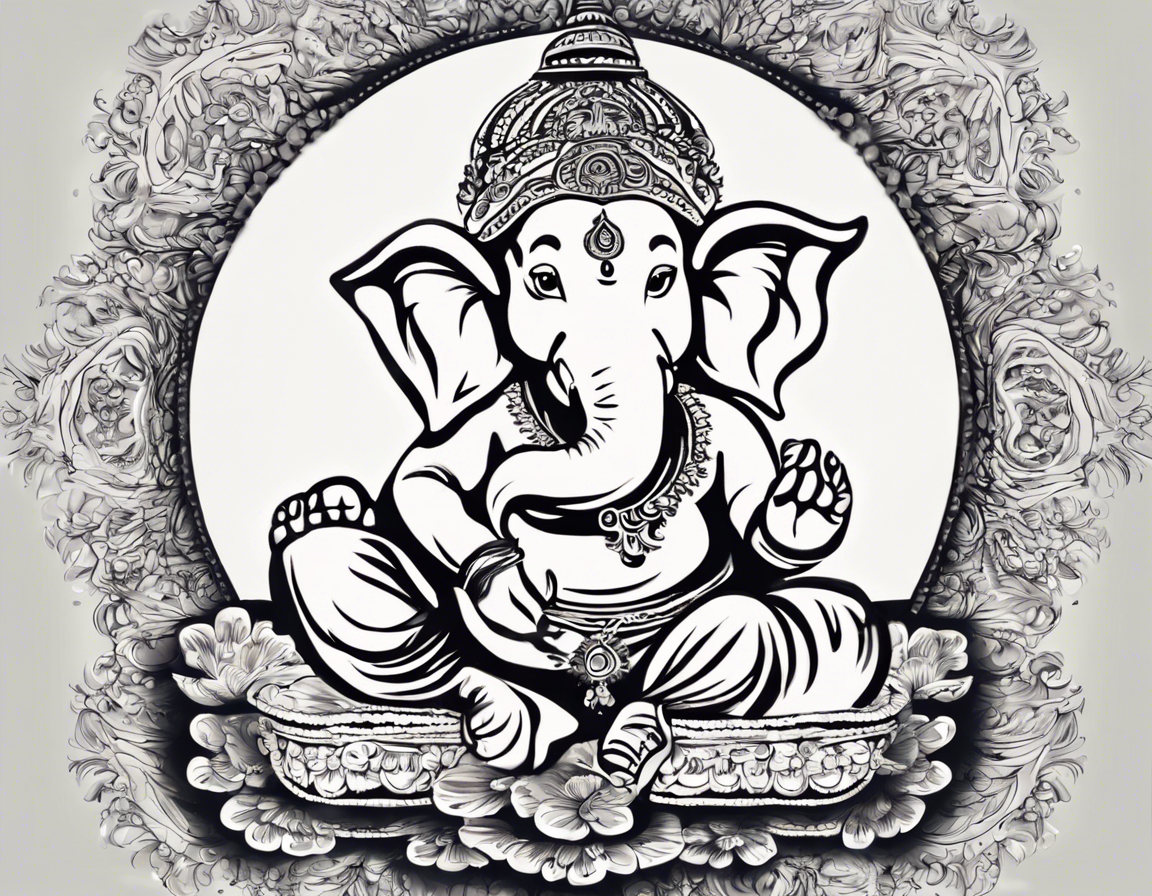Ganesh Chaturthi, also known as Vinayaka Chaturthi, is a grand Hindu festival celebrating the birth of Lord Ganesha, the elephant-headed god of wisdom, prosperity, and good fortune. Among the many regions in India, Maharashtra holds a special place in its heart for this beloved deity. The festival is celebrated with tremendous zeal and fervor in the state, with colorful processions, elaborate decorations, and vibrant rituals that captivate both locals and tourists alike. One of the most famous slogans during this festival is “Amchya Papani Ganpati Anla”, which loosely translates to “Our Ganesha has arrived.”
Origins of Ganesh Chaturthi in Maharashtra
Ganesh Chaturthi has been celebrated in Maharashtra since the time of Maratha rulers, but it gained public attention and prominence due to the efforts of Lokmanya Tilak during the British Raj. In the late 19th century, Tilak popularized the festival as a means to bring people together for a common cause – to unify them against British rule. The festival served as a platform for social and political gatherings, instilling a sense of unity and patriotism among the masses.
The Iconic Ganesh Pandals
One of the most striking features of Ganesh Chaturthi in Maharashtra is the elaborate pandals dedicated to Lord Ganesha. These pandals are temporary structures erected in public spaces or homes to house the deity during the festival. Each pandal is uniquely designed, with intricate decorations, themes, and lighting arrangements that leave visitors in awe. Artists and craftsmen work tirelessly for months to create these stunning setups, often drawing inspiration from current events, mythology, or social issues.
Ganesh Visarjan: A Spectacle to Behold
The culmination of Ganesh Chaturthi is marked by the Ganesh Visarjan, where the idols of Ganesha are immersed in water bodies with much fanfare and enthusiasm. The immersion symbolizes the cycle of creation and dissolution in Hindu mythology, with devotees bidding farewell to their beloved deity with a promise of his return the following year. The streets come alive with processions, music, and dance during the visarjan, creating a vibrant and emotional atmosphere.
Unique Traditions and Practices
-
Modak Offering: Modak, a sweet dumpling filled with coconut and jaggery, is considered Lord Ganesha’s favorite food. It is offered to the deity as a symbol of devotion and love.
-
Aarti and Mantras: Special prayers, aarti, and mantras are chanted during the festival to seek Ganesha’s blessings for prosperity, success, and happiness.
-
Ganpati Bappa Morya: This popular chant reverberates throughout Maharashtra during Ganesh Chaturthi, with devotees enthusiastically proclaiming “Ganpati Bappa Morya, Pudhchya Varshi Lavkar Ya” which means “Lord Ganesha, come soon next year.”
Environmental Concerns and Sustainable Celebrations
In recent years, there has been a growing awareness about the environmental impact of Ganesh Chaturthi celebrations, particularly due to the immersion of plaster of Paris idols in water bodies. To address this concern, many communities have started opting for eco-friendly Ganesh idols made from clay or natural materials that dissolve quickly in water without causing harm to the environment. Initiatives promoting tree plantation drives, use of natural dyes, and waste segregation have also gained momentum to make the festival more sustainable.
FAQs (Frequently Asked Questions)
- What is the significance of Ganesh Chaturthi in Maharashtra?
Ganesh Chaturthi is a significant festival in Maharashtra, symbolizing unity, devotion, and cultural richness among the people.
- How long does Ganesh Chaturthi last?
The festival typically lasts for 10 days, culminating in the Ganesh Visarjan on the final day.
- Why is Lord Ganesha considered the remover of obstacles?
Lord Ganesha is known as the remover of obstacles and the god of wisdom due to his ability to clear paths and bestow intellect and success upon his devotees.
- Is Ganesh Chaturthi only celebrated in Maharashtra?
No, Ganesh Chaturthi is celebrated across India and in various parts of the world where there is a Hindu diaspora.
- What are some traditional dishes made during Ganesh Chaturthi?
Apart from modak, other popular dishes made during Ganesh Chaturthi include puran poli, shrikhand, and coconut ladoo.
- How can one participate in Ganesh Chaturthi celebrations in Maharashtra?
Visitors can join the festivities by visiting famous pandals, taking part in aarti ceremonies, and experiencing the cultural extravaganza that unfolds during the festival.
- Are there any specific rituals associated with Ganesh Visarjan?
During Ganesh Visarjan, devotees perform aarti, offer coconuts and flowers to Lord Ganesha, and bid farewell with the hope of his swift return next year.
- What are some eco-friendly alternatives to celebrate Ganesh Chaturthi?
Eco-friendly alternatives include using clay idols, natural dyes, biodegradable decorations, and avoiding the immersion of idols in water bodies.
- How has technology influenced Ganesh Chaturthi celebrations in recent times?
Technology has played a significant role in streamlining event management, promoting online darshan (virtual viewing), and organizing virtual aartis for devotees who cannot visit in person.
-
What is the cultural significance of Ganesh Chaturthi beyond the religious aspect?
Besides its religious connotations, Ganesh Chaturthi serves as a platform for cultural exchange, artistic expressions, and community bonding, reflecting the rich heritage of Maharashtra.
As Maharashtra gears up to celebrate another joyous Ganesh Chaturthi, the spirit of unity, devotion, and festivity continues to resonate across the state, reinforcing the age-old adage – “Ganpati Bappa Morya, Mangal Murti Morya.”
